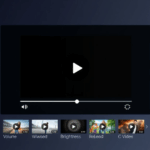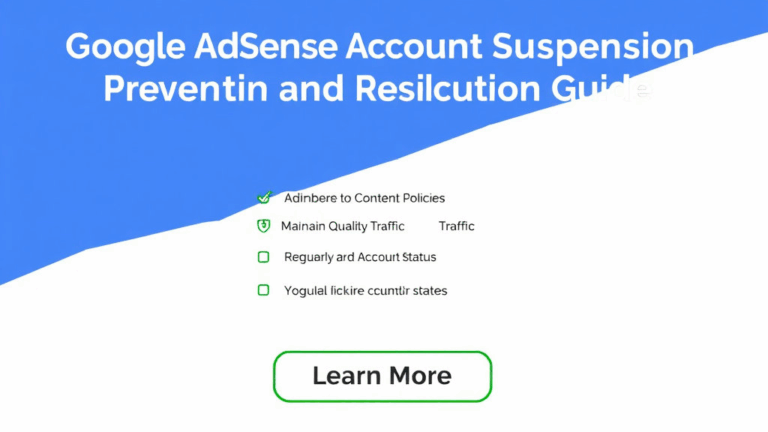Strategies That Actually Work for AdSense on Livestreams
AdSense Isn’t Built for Livestreams (But It Can Be Bent)
So here’s the dirty secret: AdSense is suspicious of anything that doesn’t look like a static page. Livestreams? Eh. Especially self-hosted or iframe’d ones. It doesn’t understand the video element’s context very well, and it’s weirdly conservative about serving ads when DOM nodes flip around too much or content “pops in.” If you’ve ever had a stream running and noticed that no ads served despite the page being technically valid — yeah, that’s the deal.
I built a React-based livestream player and couldn’t figure out why my ad slots were returning blanks except when I hard-refreshed the page. Turns out Googlebot treated the page differently when JavaScript rerendered the DOM mid-session. There was no crawlable content at all by the time the ads tried to load.
The fix was dumb but effective: freeze the layout for 3 seconds after mount and delay everything else with a minimum timeout. Not the prettiest…but the ads came back.
Best Positions for Livestream Ad Units (Spoiler: Not Inside the Player)
Instinct says slap an ad over the video player. Don’t. Or if you do, it has to be custom — AdSense won’t approve in-viewport UI interference via their standard units. You’ll either get policy violations or a brutal CTR drop.
Here’s what actually worked for me:
- Sticky vertical banner on the right (300×600), absolutely positioned with a fixed z-index
- In-article ad units embedded in description or chat replay sidebar (desktop only — do not try on mobile)
- Top-of-page leaderboard set to reload every five minutes using
adsbygoogle.pushwith the key trick ofdata-ad-refresh-ratein custom context - Companion banner beneath the video with lazy loading disabled (yes, force the impression on page load)
- Auto ads disabled across the board — killed more revenue than they earned in high churn traffic streams
One oddity: If you embed your stream inside a container that uses display: none then display: block after init, sometimes the ad iframes preload & disappear. I went in with devtools and verified — there’s a race condition where Chrome will render the wrapper div too late for Adsense’s adsbygoogle.js to properly bind event listeners. I’m still mad about that.
Realtime Earnings Are Lying to You (and That’s Not a Bug)
You’ve probably watched the “Today So Far” numbers stutter during a big stream. Like — you’ll have 300 users drop in from Reddit, 500 from Twitter, and you’re still looking at a dollar-fifty on the dash. Something is not syncing.
Here’s the thing: AdSense reports don’t update in real time. Not even close. Usually you get semi-reliable impressions within 30 minutes, but revenue and CTR may lag behind several hours. More confusing? Livestream traffic often produces deferred impressions — basically, a viewer sticks around long enough for the ad to count after the session started — which distorts your analytics even more.
I once had a night where my stream peaked at 1,200 concurrents and showed me $3 live. Next morning it was $16. Weirdly, the CPM had spiked because one dude from Switzerland apparently drank 10 mid-rolls over six hours (confirmed via Firebase session ID match).
The bottom line: if you’re watching the stream and wondering why the numbers are frozen, it’s not your implementation. It’s just how the pipes work.
YouTube Livestreams Embedded on Your Site Won’t Earn Through AdSense
So this one trips up people who assume embedding their YouTube livestream on their site will earn them extra revenue. Nope. YouTube’s ads are served through the YouTube network, and even if you’re running multiple AdSense accounts (like I unfortunately still do), the hosted video iframe is sandboxed and completely ignores your site’s ad units.
The only workaround I found — and this is janky — was to put the stream beside rather than inside the content. So, design-wise, think: your post or content lives in main, YouTube embed floats beside it or beneath. If you trickle in some contextual blocks (chat comments, transcription log, discussion buttons), your inline content becomes ad-eligible and actually gets served decent inventory.
But don’t expect the ads to match the stream’s content. Because it’s iframe’d, Google AdSense sees whatever surface keywords and context you provide on the rest of the page. I even tested stuffing relevant text 1000px off-screen via lazy-spacer divs. Didn’t help. Google’s smarter than that, usually.
Interstitials Are a Bad Idea but Also Kind of Brilliant If You Manual-Gate
You will not get good results if you go full aggressive with interstitials on stream launch. Most viewers will bounce. But if you block access behind a gate (like a login wall or pre-roll lobby with content), you can serve a before-view ad that feels like part of the experience.
I ran an experiment with PHP-based access gating. You hit the event page, and we loaded a chat preview + schedule + entry lobby. Five seconds later, a full-page unit loads. Then you hit “enter room” and the main stream loads behind a Membership-wall (not paid, just unique-user validated). CTR went down. But CPC went up across the board.
One caveat: if you reload the stream dynamically via AJAX or React, Google sometimes drops session anchors, which ruins impression tracking. So instead, generate hardcoded entry URLs with timestamps, and drop UTM tokens to re-seed origin.
Ad Session start recorded, no active content mapped.” — this showed up in my publisher logs once. That’s when I realized my page wasn’t even registering the user as present until after 12 seconds. Redirect w/ minimal JavaScript sped up session start by 4x.
Cloudflare Stream and AdSense: Compatible But Not Cozy
I love Cloudflare Stream for self-hosted stuff, but man, their embed doesn’t play well with standard AdSense. Something about how they construct the <iframe> environment means your ads need to be absolutely outside of the video DOM to register. Also, CSP headers from Cloudflare sometimes block pagead2.googlesyndication.com unless you manually allow script sources. I learned this the annoying way — via a support thread full of silent AdSense voids.
If you’re using Cloudflare Stream, here’s what kept me from losing my hair:
- Whitelist all Google ad domains in your
Content-Security-Policy - Serve the stream HTML page from a static origin (not same domain as stream origin)
- Defer video embed loading by 300ms so AdSense gets a chance to initialize first
- Drop a forced
window.adsbygoogle=window.adsbygoogle||[]push before the video loads anywhere on the page - Double-check viewport units — on mobile, Cloudflare’s responsive player can annihilate contained ad units if not wrapped correctly in a
position: relativecontainer
The Weird Stuff: When AdSense Thinks Your Livestream Is Spam
I wish I had screenshots, but back in August, one of my livestream pages got flagged for “misleading navigation.” Nothing changed in the layout — no popups, no auto-redirects. Just a Twitch embed and a live Q&A box.
I dug through the violation notice, and it came down to this: too many internal links inside the auto-updating chat box. Each comment included a small link-back to user profile (just a dummy div, technically). AdSense interpreted the embedded JS as part of the content’s main navigation and declared it “misleading.”
Removed the links. Flag disappeared in two weeks. No warning. No confirmation. Just vibes.
If your revenue starts flatlining and your crawl stats show mostly 204s or blocked resources, check Security Issues and Policy Center in your AdSense dashboard. Often the system has already told you what’s wrong — it just buried it three nested menus deep where nobody looks until it’s too late.














